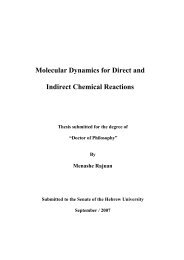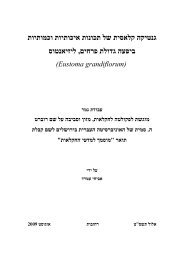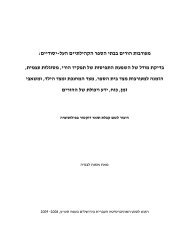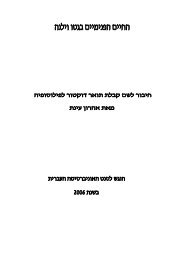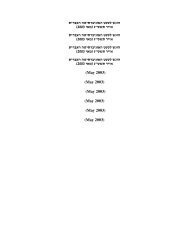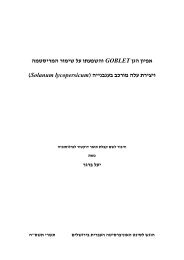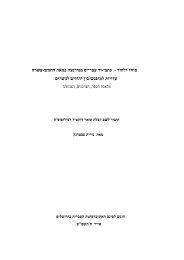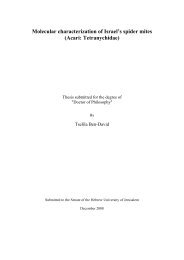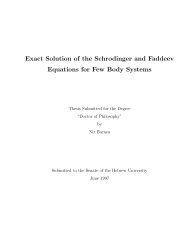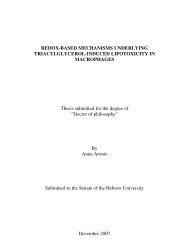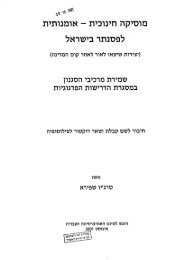Revealing the Mechanism of HSP104 Transcription Initiation in the ...
Revealing the Mechanism of HSP104 Transcription Initiation in the ...
Revealing the Mechanism of HSP104 Transcription Initiation in the ...
You also want an ePaper? Increase the reach of your titles
YUMPU automatically turns print PDFs into web optimized ePapers that Google loves.
1<br />
1<br />
A) B)<br />
700<br />
600<br />
500<br />
ras2∆msn2∆msn4∆<br />
16<br />
14<br />
12<br />
30 0 C<br />
Time <strong>in</strong> 39 0 C 0’ 15’ 30’ 60’<br />
Sp1ras2∆msn2∆msn4∆<br />
5hrs<br />
30 0 C<br />
<strong>HSP104</strong><br />
ACTIN<br />
400<br />
300<br />
10<br />
8<br />
6<br />
200<br />
4<br />
100<br />
25.5<br />
2<br />
0<br />
-334 -300 -284 -280 -260<br />
0<br />
-248 -230 -222 -215 -200 -180<br />
Figure 6. <strong>HSP104</strong> expression <strong>in</strong> ras2∆msn2∆msn4∆ cells. A) Sequences between 334 and 300bp<br />
<strong>of</strong> <strong>HSP104</strong> are important for <strong>the</strong> β-galactosidase activity <strong>of</strong> <strong>the</strong> promoter <strong>in</strong> ras2∆msn2∆msn4∆ cells at<br />
30 o C. A change <strong>in</strong> scale used <strong>in</strong> <strong>the</strong> right hand graph. The 25.5 fold decrease <strong>in</strong> activity was obta<strong>in</strong>ed<br />
by divid<strong>in</strong>g <strong>the</strong> activity <strong>of</strong> -334LacZ by that <strong>of</strong> -300LacZ. B) S1 analysis <strong>of</strong> <strong>HSP104</strong>.<br />
In order to unambiguously assess that <strong>the</strong> sequences identified <strong>in</strong> our study are<br />
<strong>in</strong>deed <strong>in</strong>dependently responsible for <strong>the</strong> heat shock responsiveness <strong>of</strong> <strong>the</strong> <strong>HSP104</strong><br />
promoter, we fused <strong>the</strong> sequences from -334 to -160, or -305 to -160 (<strong>the</strong>se sequences<br />
conta<strong>in</strong> all elements responsible for <strong>the</strong> <strong>in</strong>duced activity, but lack <strong>the</strong> basal promoter<br />
region) to <strong>the</strong> CYC1 m<strong>in</strong>imal promoter and checked whe<strong>the</strong>r <strong>the</strong> sequences derived<br />
from <strong>the</strong> <strong>HSP104</strong> promoter could now render <strong>the</strong> CYC1 promoter heat shock<br />
responsive [<strong>the</strong> native CYC1 promoter is normally not <strong>in</strong>duced by heat shock (data not<br />
shown)]. Briefly, we found that <strong>the</strong> <strong>HSP104</strong> enhancer region is <strong>in</strong>deed sufficient for<br />
render<strong>in</strong>g <strong>the</strong> heterologous promoter responsive to heat shock (Fig. 7A). Also, <strong>the</strong><br />
heterologous reporters were constitutively elevated <strong>in</strong> ras2∆ cells. Namely, <strong>the</strong><br />
sequence we def<strong>in</strong>ed as an enhancer is <strong>in</strong>deed, <strong>in</strong>dependently, necessary and sufficient<br />
for promoter activation and regulation <strong>in</strong> response to heat shock and <strong>in</strong> response to <strong>the</strong><br />
Ras pathway. Notably however, we also observed that <strong>the</strong> heterologous promoters<br />
displayed lower basal activity compared to <strong>the</strong>ir homologous counterparts (compare<br />
Fig. 7A and 2B and data not shown). These results suggest that <strong>the</strong> element we<br />
def<strong>in</strong>ed as essential for <strong>the</strong> basal transcription activity (i.e., <strong>the</strong> 34bp between -334<br />
and -300) are specific for <strong>the</strong> <strong>HSP104</strong> promoter and functions toge<strong>the</strong>r with its own<br />
basal promoter and cannot function with ano<strong>the</strong>r.<br />
16



